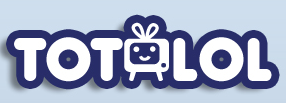
For developers, the Web is increasingly becoming a rich trove of data which can be plucked and used as the foundation to build new services and applications. The data on the Web is becoming increasingly accessible through application programming interfaces (APIs), and some of the richest APIs come from the biggest sites on the Web: YouTube, Facebook, Twitter. But just as these APIs give life to tens of thousands of developers, they can also be limiting. Ron Ilan, the developer and entrepreneur behind the children’s video site Totlol, learned the hard way that if you live by the API, you can also die by the API.
Totlol is a site filled with children’s’ videos from YouTube curated by parents. Think of it as a safe, white-listed, children’s version of YouTube. It is built entirely on top of YouTube’s APIs. But a change in the terms of service (TOS) of those APIs caused Ron to shut down the free version of his site six months ago and move to a subscription model which never really became a going concern.
Ron clearly blames YouTube for his woes. You can read his version of the whole sad tale, which portrays YouTube as conspiring to change its API terms of service in response to Totlol. Whether or not there was any actual malice on the part of YouTube, or the change was just a coincidence in timing, as someone who was on the YouTube API team told Ilan via email, the episode is a cautionary tale for anyone trying to build a business on another company’s APIs.
The gist of what happened is that Ilan developed Totlol using YouTube’s APIs. The service wrapped YouTube videos in Totlol’s own player on its site, where people could create collections and do much more. YouTube noticed the app and even featured it in its Google Code widget on July 7, 2008, after some delay. That also happened to be the exact same day that Google changed the terms of service for its API to disallow commercial use without “YouTube’s prior written approval,” including for the following:
the sale of advertising, sponsorships, or promotions on any page of the API Client containing YouTube audiovisual content, unless other content not obtained from YouTube appears on the same page and is of sufficient value to be the basis for such sales
That pretty much killed Totlol’s revenue model, which was to place ads on the pages where the videos were played. Just bad luck, right? Ron asked YouTube for permission to run ads on his site, but he never got a response. Ron was understandably frustrated buy this turn of events. The site was his livelihood. In his post, he sums up what he thinks happened this way:
When the YouTube API team saw Totlol they liked it. At about the same time someone else at Google saw it, realized the potential it, and/or similar implementations may have, and initiated a ToS modification. An instruction was given to delay public acknowledgement of Totlol until the modified ToS where published. Later an instruction was given to avoid public acknowledgement at all.
Maybe there was a connection, or maybe this conspiracy existed only in Ron’s mind. It is hard to believe YouTube would modify it in response to a single developer. In a statement, YouTube responds:
Updates to our API Terms of Service generally take months of preparation and review and are pushed out primarily to better serve our users, partners and developers. When new Terms of Service are ready, we notify our developers through as many channels as possible, including on our developer blog.
And YouTube did at least try to reach out to him. In June of this year, he was approached by a director of product management at YouTube who wanted to know what YouTube could do to prevent such failures in the future. In an email, the YouTube director asked Ron:
What types of business models would we need to support in order to make this worth a developer’s while?
. . . Semi-related: what about the YouTube APIs made it challenging to run the site as a standalone?
The questions make it clear that YouTube knew there were things it could do to make its APIs more developer-friendly. The two even met at a Starbucks, but nothing came of the meeting.
Ultimately, it was up Ron to build a site that not only attracted users but was also economically viable. But like many developers, he was at the mercy of YouTube’s rules. Live by the API, die by the API. Ron is now looking for a regular 9-to-5 job to support his family.
YouTube has no problem splitting revenues with bigger partners such as Vevo, which show their videos on both their own site and on YouTube. But maybe YouTube is making a distinction between splitting revenues with content creators and with content aggregators like Totlol. Is there not enough value in content aggregation when done creatively. The executives in charge of Google News, at least, would answer in the affirmative. YouTube is not a kid’s site, yet Totlol was able to create a kid’s site out of YouTube, with different features and a different look and feel.
YouTube wants to control the economics surrounding its videos, whether they are watched on YouTube or on another site. The last thing it wants is to encourage a bunch of spam sites filled with Youtube videos and AdSense. That’s fair enough. But Totlol was a legitimate site, even an innovative one. It was the kind of site YouTube should do everything it can to encourage. Tales like this one make you wonder how hard it is for developers who want to play by the rules to build businesses on top of those APIs. Is YouTube helping developers or thwarting them?